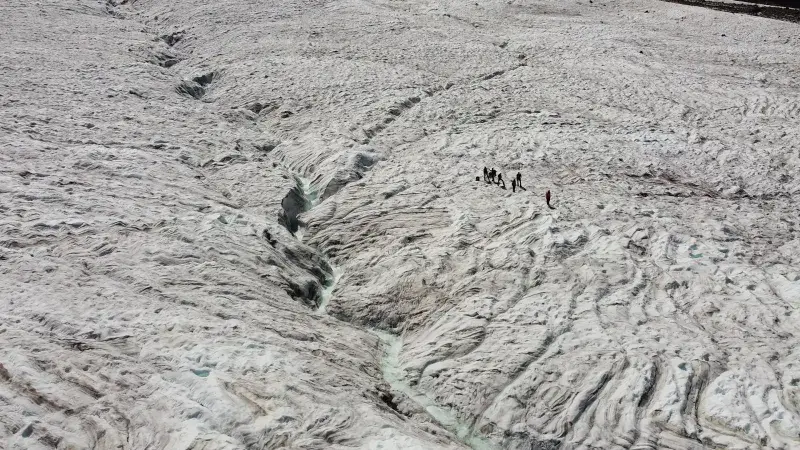Between 2000 and 2023 the world’s glaciers collectively lost 6,542 billion tonnes of ice, contributing 18 mm to global sea-level rise, experts say.
Ice loss
On average 273 billion tonnes of ice are being lost per year – to put this into perspective this is equivalent to 30 years of water consumption by the entire world’s population.
Scientists also found a stark increase in the amount of ice lost over the past 10 years compared with the start of the century. Some 36 per cent more ice melted in 2012 to 2023 than in 2000 to 2011.
In 2002, glaciers – excluding the continental ice sheets of Greenland and Antarctica – spanned 705,221 sq km and held an estimated 121,728 billion tonnes of ice.
Climate change
The international research team, led by the Universities of Edinburgh and Zurich, found that over the past two decades, glaciers have lost approximately 5 per cent of their total volume, with regional losses ranging from 2 per cent on the Antarctic and Subantarctic Islands, to 39 per cent in Central Europe.
Glaciers rank as the second-largest contributor to global sea-level rise, following ocean warming. They are also natural indicators of climate change, and play a vital role in many communities providing vital water resources, especially during dry seasons and sustaining hydropower energy, experts say.
GlaMBIE
The research, published in the journal Nature, is part of the Glacier Mass Balance Intercomparison Exercise – known as GlaMBIE.
An international team of scientists – coordinated by the World Glacier Monitoring Service (WGMS) based in Zurich, The University of Edinburgh and Earthwave – gathered and analysed data from field measurements and from optical, radar and laser satellite missions.
Satellite data
Satellite observations included those from the US’s Terra/ASTER and ICESat-2, the US–German GRACE, the German TanDEM-X and European Space Agency’s (ESA’s) CryoSat missions.
By combining different types of data from multiple sources, GlaMBIE produced an annual timeline of the world’s glaciers’ mass changes from 2000 to 2023.
The research was primarily funded by ESA’s Science for Society programme, with additional support from the International Association for Cryospheric Sciences.


